You must visit some or all of these national parks in Louisiana. Louisiana is home to historical parks, monuments, military parks and historic trails. This southern U.S. state makes for a fantastic vacation destination. With many cultural and natural things to see and do and the addition of national park sites, there’s no excuse not to book a trip.
There’s no denying that New Orleans is the most popular destination in Louisiana, but these national park sites are dotted around the state. From the historic plantations of Cane River Creole to the famous New Orleans Jazz National Park, this state has something for everyone, from history lovers to nature connoisseurs. So, check out these six amazing national park sites next time you plan a trip to the ‘Pelican State’.
Contents
National Parks in Louisiana
National Historic Park

1- Cane River Creole National Historic Park
This national historic park is in Natchitoches in the Cane River region of Louisiana, around 50 miles (80 km) northwest of Alexandria.
This park was first established in 1994 and aims to preserve the natural and cultural landscape of the Cane River region.
The Cane River Creole National Historic Park has a unique history that dates back to the founding of Louisiana Creole culture.
Creole culture and the Creole language originated in Louisiana during the 18th century.
Creole culture developed in the colonial era when the French and Spanish brought it over to the States, having been influenced by African culture.
The town of Natchitoches was critically important in terms of 18th-century trade.
This national historic park is home to plantations, churches and homes significant to the area and its industry.
One of the main stories told at the Cane River National Historic Park is that of the cotton kingdom.
At the park, there are two cotton plantations, Oakland and Magnolia, where you can learn about the people involved in the industry.
This national historic park also tells the story of Louisiana’s slaves who were sent to work in the cotton fields and blacksmiths and carpenters on site.
Magnolia had around 250 enslaved workers, whereas Oakland had 150 people working on the plantation.
On your visit, you can see where people lived and worked.
Interestingly this site allows you to learn the area’s history through the lens of enslaved workers.
Take a guided tour of the plantations and cabins where the slaves had to live or wander around on your own.
Explore the Briarwood Nature Preserve and the Natchitoches Art Guild & Gallery.
National Historic Trail
2- El Camino Real de los Tejas
In 2004, El Camino Real de los Tejas was registered as part of the National Trails System by the national park service.
This trail starts in Mexico and passes through Texas and Louisiana providing visitors with scenic routes along the El Camino thoroughfare.
More specifically, the trail started in Viceroyalty in New Spain, now present-day Mexico.
The trail winds through Saltillo, Monterrey, Laredo (now the Texas border), San Antonio and Nacogdoches before crossing into Louisiana at the Sabine River.
The trail was first used by a Spanish governor by the name of Alonso de León, who established the route as an effective corridor for expeditions to East Texas.
Multiple expeditions to Eastern Texas were carried out between 1686 and 1690.
Later, between 1691 to 92, the route was perfected by Domingo Terán de los Ríos, the first governor of Spanish Texas.
While most of this 2,500-mile trail is in Texas, it ends in Natchitoches in Louisiana.
There are opportunities to hike sections of the trail and historical places to visit along the original route.
When visiting Louisiana, you can head to the following sites along the trail: Los Adaes State Historic Site, Natchitoches Parish Convention & Visitors Bureau.
Fort St. Jean Baptiste State Historic Site, Cane River National Heritage Area and Fort Jesup State Historic Site.
Also read:
- 20 Landmarks in Louisiana
- 20 Beaches in Louisiana
- 20 Cities in Louisiana
- 6 Louisiana National Parks
- New Orleans At Night
- 20 Museums in New Orleans
- New Orleans French Quarter
- Ultimate Swamp Tour
- 20 Things To Do In Baton Rouge
- 20 Things To Do In New Orleans
- Where To Stay In New Orleans
- 20 State Parks in Louisiana
- 15 Things Louisiana Is Famous For
National Historical Park And Preserve
3- Jean Lafitte National Historical Park and Preserve
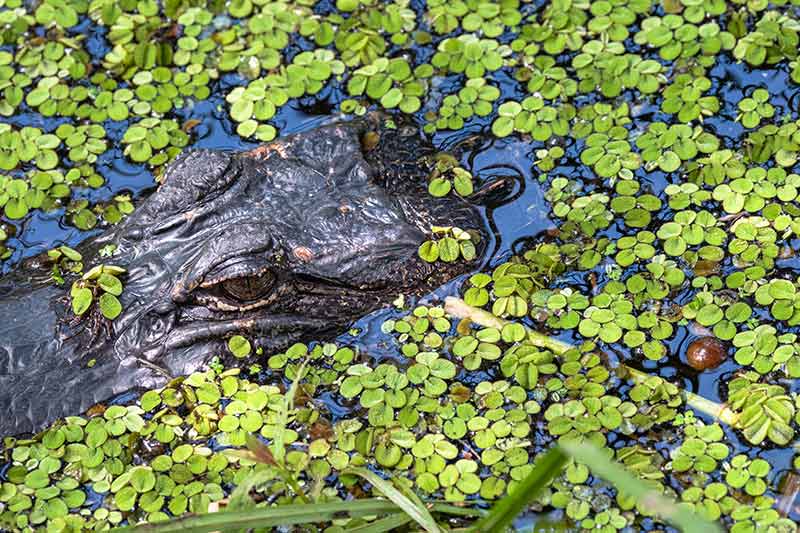
You may be wondering who Jean Lafitte was and what he did to have a national historic park and preserve named after him.
Well, Jean Laffite, originally from France, was a pirate! He was a pirate dealing not in jewels and gold but slaves.
In 1808 international slave imports in the United States became illegal. Laffite seized on the notion that despite the ban, rich white American’s attitudes hadn’t changed towards slavery.
He became one of the key players in the illegal slave trade industry.
Despite Lafitte’s despicable occupation, he became one of Andrew Jackson’s (the 7th U.S. President) advisors during the War of 1812.
His work was always shady and hardly ever legal and he was even a spy for the Spanish during Mexico’s war for independence.
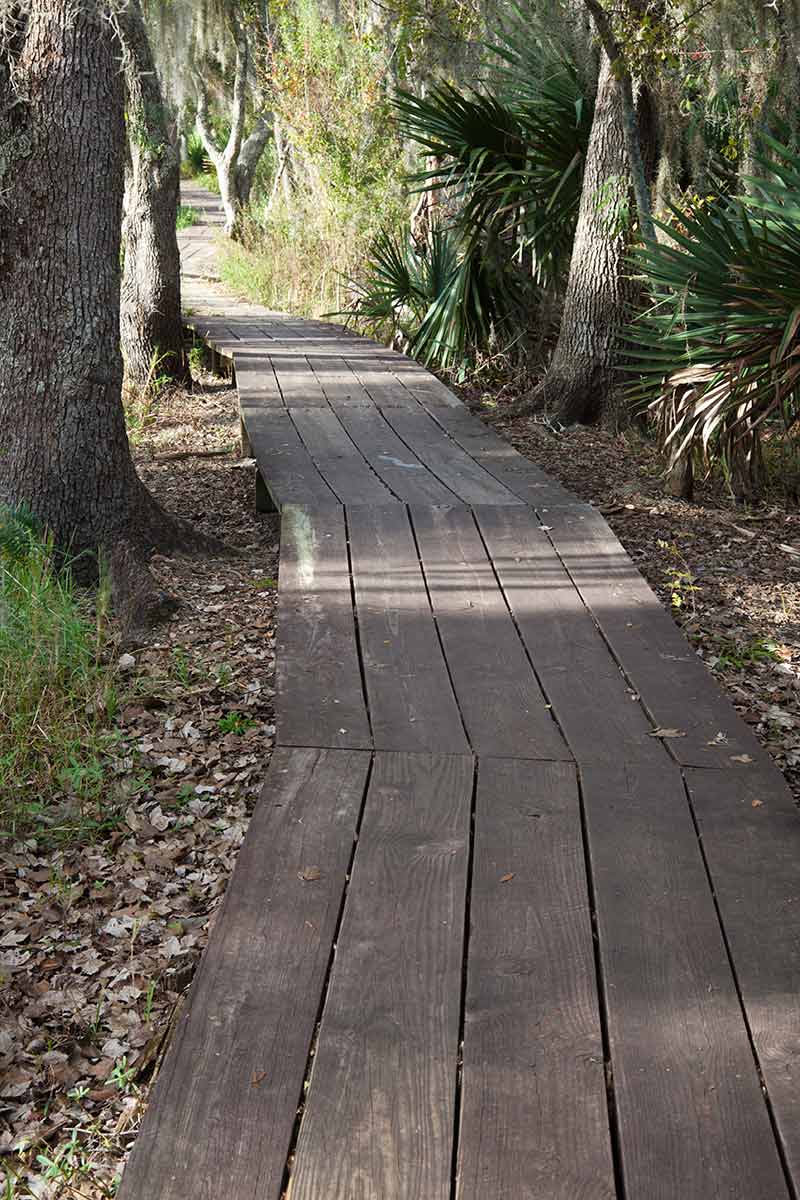
Many believe that Lafitte buried some of his treasure in the swampy parts of rivers and lakes in Louisiana, but no treasure is yet to be found.
This park protects the cultural and natural resources of the Mississippi River Delta.
Within this park and preserve are six sites covering 20,000 acres (8093 ha) and a park headquarters.
The Barataria Preserve is part of the park.
Located in Mattero, there’s a visitors’ centre and miles of trails to explore.
Head to Chalmette to see the Chalmette Battlefield, a site of the 1815 battle of New Orleans, where Andrew Jackson’s army beat the British.
The Prairie Acadian Cultural Center also celebrates the Cajun Prairie, an area of marshes around Lake Charles in southern Louisiana.
National Historical Park
4- New Orleans Jazz National Historical Park
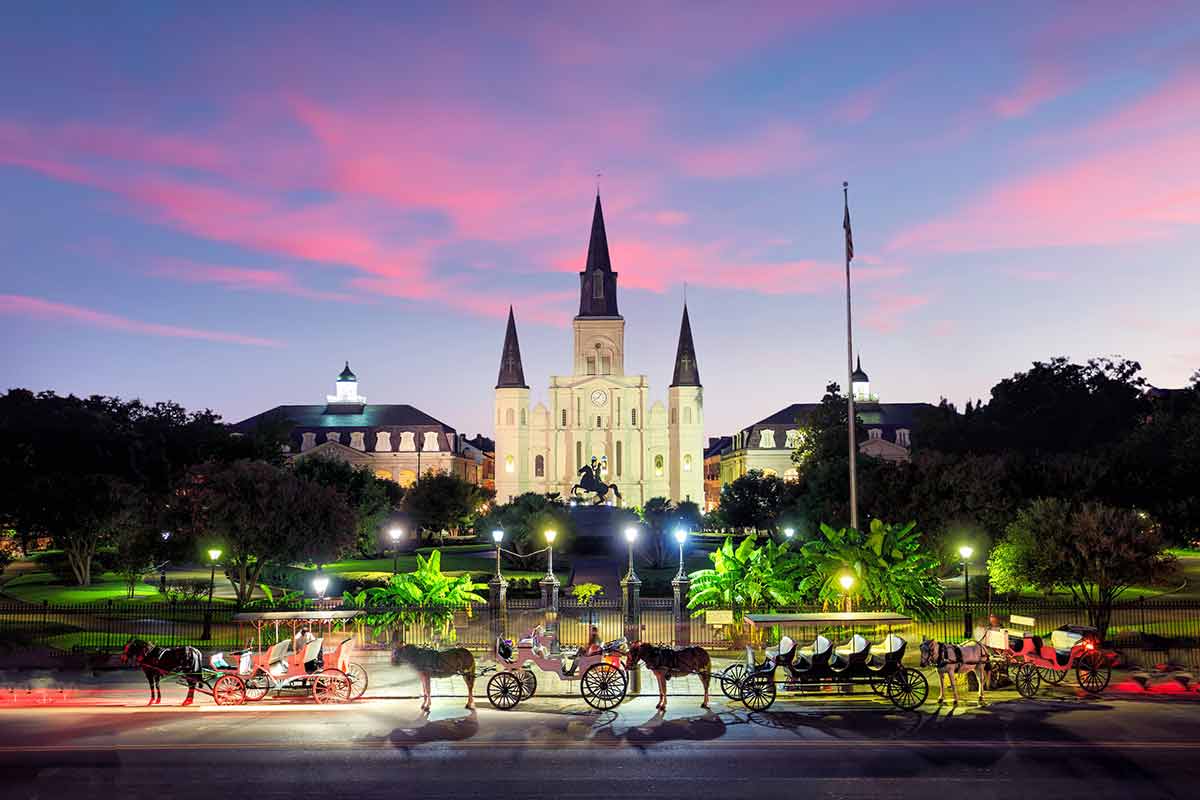
Jazz music is almost synonymous with New Orleans and Louisiana.
The New Orleans Jazz National Historical Park is a top spot to spend time in Louisiana, if not the entire south.
Set in the neighbourhood of Treme in the French Quarter of New Orleans, this is an excellent way of seeing a national park site without leaving the city.
This national historic park is ideal for music lovers, particularly those enthusiastic about jazz.
This park celebrates the evolution of jazz over the years.
There is a visitor centre and also a concert venue.
At this park, you can learn about the people and places that helped jazz music’s progression and development.
Jazz originated in New Orleans in the second half of the 19th century.
Many of the former slaves found jobs as musicians and began to flourish.
It is believed that jazz started with Charles “Buddy” Bolden during the late 19th century.
Bolden was fundamental in the evolution of jazz. He was a trumpet player and could always be heard playing from the clubs on South Rampart Street.
Musicians like Freddie Keppard, King Oliver, Louis Armstrong, and Jelly Roll Morton followed in his footsteps and are some of the most iconic jazz artists today.
Regular jazz performances are held at the New Orleans Jazz National Historical Park.
There are also several lectures, films and visual exhibits where you can learn more about jazz, its origins, and the people who shaped the music genre.
One of the best parts of this historic park is the Perseverance Hall no.4.
Another cool thing about this park is that many staff members play jazz instruments.
So if you have questions about jazz music, definitely ask the staff, as they are super knowledgeable and happy to give you some insight.
National Monument
5- Poverty Point National Monument
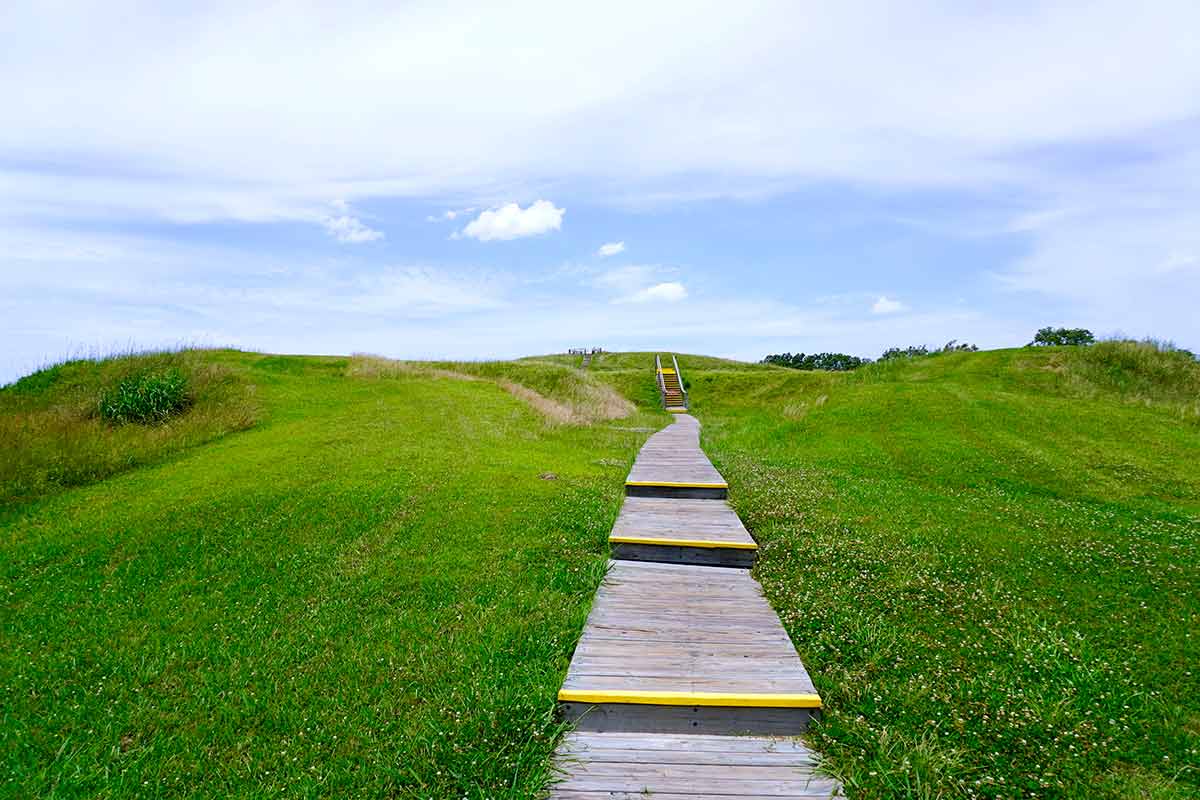
The Poverty Point National Monument is 40 miles (64 km) from Monroe in the state’s northeast.
Poverty Point is a historic landmark, a state historic site and a national monument.
What’s more, it is also a UNESCO World Heritage Site. The park is open year-round and offers a variety of interesting activities.
Poverty Point is home to the remnants of ancient culture and the largest prehistoric earthworks in North America. Poverty Point was a trading centre and engineering phenomenon.
The history of this monument dates back 3,000 years and was part of a huge trading network.
This landscape was shaped by men and women using baskets to make these carvings.
The original mound was 72 feet (21 m) tall and made of these huge half-circles.
This site is so large that it’s remarkable to think how people managed to create this earthen monument without machines or even domesticated animals.
Many artifacts were found at the site allowing archaeologists to gain more insight into how the structure was made.
There were domestic tools, human figurines and stones that were believed to be from around 800 miles (1287 km) away.
This led archeologists to believe that Poverty Point was a trade, residential and ceremonial centre.
The site was abandoned in 1100 B.C., but then another group added to the mound in around A.D. 700.
In 1962, the federal government designated the site a National Historic Landmark and in 2014, it gained UNESCO status.
Poverty Point is one of only three archeological sites in the United States with this status.
It’s worth joining a guided tour of the Poverty Point National Monument site. There are also demonstrations and programs to discover throughout the year.
If you fancy a walk, take the 2.6-mile hiking trail around the monument and surrounding area.
There are also several picnic areas, so bring some lunch and make a day of it.
Head to the visitor centre and you’ll be able to explore this national monument museum.
This museum is filled with a ton of information boards as well as lots of real artifacts from the site.
There are cases filled with spear points, beads, carved stones and pottery.
Everything you see at the museum was found at the park.
If you are interested in history and archaeology, this is an absolute must-visit national park site in Louisiana.
National Military Park
6- Vicksburg National Military Park
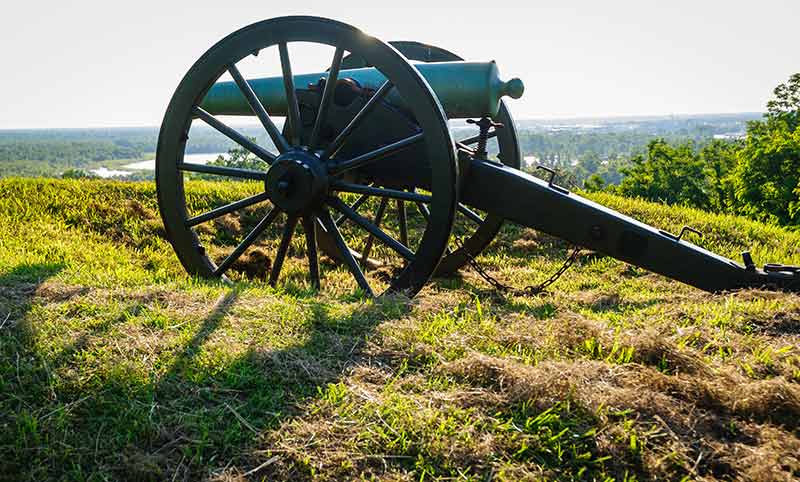
The Vicksburg National Military Park is in both Louisiana and Mississippi.
The park covers 1,850 acres (749 ha) of space, preserving the site of the Battle of Vicksburg during the American Civil War.
The Battle of Vicksburg played a pivotal role in Louisiana’s and Mississippi’s history.
The Union won the American Civil War, and as a result, the South was cut in two.
The Union Army was led by Ulysses S. Grant, who later became president between 1869 and 1877.
So, how did the Union achieve victory at Vicksburg?
Grant moved his army to the western bank of the Mississippi River.
Situated just below Vicksburg, they crossed the challenging Mississippi in search of food to feed the army.
President Abraham Lincoln said, “the war can never be brought to a close until that key is in our pocket” and the key he was referring to was Vicksburg.
This park is open year-round and you can take a driving or guided tour.
There are 16 miles of driving routes around the park.
There are also 1,325 monuments and markers in the park where you can learn more about the battle.
Vicksburg prides itself on being one of the most accurately laid out battlefield sites, with a lot of historical research into creating the site.
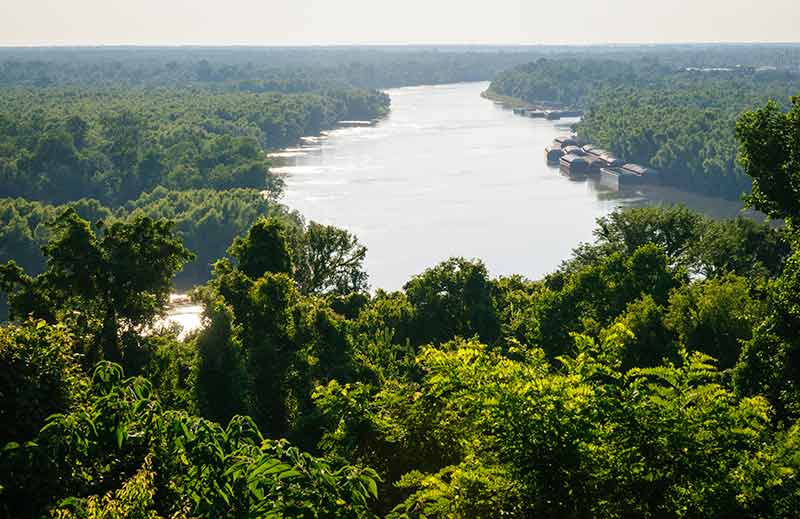
You can also enjoy the 12.5 miles (20 km) of walking trails around the park.
A highlight of a visit to Vicksburg is the old gunboat, the U.S.S. Cairo, which was sunk in the Yazoo River in 1862.
This gunboat was first discovered in 1956 but it wasn’t until 1964 that it was finally recovered from the river.
There’s no doubt that Louisiana is an excellent destination for cultural activities.
These six national park service sites are uniquely diverse and interesting. No trip to Louisiana is complete without adding at least one of these national parks to your itinerary.
The most convenient park for visitors is the New Orleans Jazz National Historical Park because chances are, if you are visiting Louisiana, you’ll be heading to the vibrant New Orleans. But if you are visiting other places in Louisiana, look for some of the state’s other national park sites.
If you love exploring national parks, you might like to read:
- Wyoming National Parks Guide
- Nevada National Parks Guide
- Michigan National Parks Guide
- 5 Maine National Parks
- New Hampshire National Parks Guide
- 25 National Parks in Canada
- 17 National Parks in Argentina
- Tasmania National Parks
- 20 National Parks in Mexico
- 18 New Mexico National Parks
- 18 National Parks in Massachusetts
- 17 Colorado National Parks
- 4 Indiana National Parks
- 5 Nebraska National Parks
- 30 Virginia National Parks
- 9 New Jersey National Parks
- 8 National Parks in Arkansas
- 8 Alaska National Parks
- 13 Tennessee National Parks
- 6 National Parks in Louisiana
- 5 Illinois National Parks
- 7 National Parks in Oklahoma
- 7 National Parks in South Dakota
- 12 Alabama National Parks
- 5 North Dakota National Parks
- 8 National Parks in West Virginia
- 20 National Parks in Arizona
- 11 National Parks In Florida
- 8 Hawaii National Parks
- 6 National Parks In Idaho
- Texas National Parks Guide
- 9 California National Parks
- 11 National Parks In Georgia
- 7 National Parks In Missouri
- 5 National Parks in Minnesota
- 7 National Parks In Kentucky
- 8 National Parks In Montana
- 15 National Parks In Washington State
- 8 South Carolina National Parks
- 12 North Carolina National Parks
- 4 Wisconsin National Parks
- 20 National Parks In India
- 11 Oregon National Parks
- 5 Connecticut National Parks
- 27 National Parks In New York State
- 4 Iowa National Parks
- Yosemite National Park
- Zion National Park
- 21 National Parks in Pennsylvania
- 9 National Parks in Mississippi
- 5 National Parks in Rhode Island
- 9 National Parks in Taiwan
- 20 East Coast National Parks
- Guide To Winter in Yellowstone National Park
Plan Your Trip

Rent A Car – Find the best car rental rates at Discover Cars. They compare car hire companies to provide you with the best deal right now.

Find A Hotel – If you’re curious about this article and are looking for somewhere to stay, take a look at these amazing hotels.





